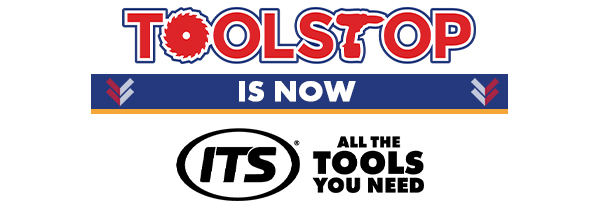Disc Cutters
Disc cutters offer fast, efficient cutting through tough materials like metal, concrete, and stone. Designed for durability and precision, these powerful tools are ideal for construction professionals needing reliable performance on demanding jobs.
Who Uses Disc Cutters?
Disc cutters are essential tools for professionals in construction, masonry, and metalworking, providing powerful cutting capabilities for various heavy-duty applications.
- Construction Workers – Disc cutters are used on-site to cut concrete slabs, metal beams, and other tough materials, helping to shape and structure large projects.
- Stone Masons – Masons use disc cutters to carve stone, ensuring clean edges and smooth finishes for paving and wall construction.
- Metal Fabricators – For metalworking tasks, disc cutters provide quick, precise cuts through steel, aluminum, and other metals, essential for structural and fabrication work.
- Demolition Experts – Demolition teams rely on disc cutters to slice through reinforced concrete and other materials, speeding up the process of dismantling structures.
Disc Cutters Are Great for Jobs Such As:
- Cutting concrete slabs – Perfect for creating pathways, foundations, or resizing slabs, disc cutters provide the power needed for clean, precise cuts in tough materials.
- Trimming metal pipes – Achieve quick, accurate cuts in metal pipes and bars, essential for plumbing and construction applications.
- Shaping stone for landscaping – Disc cutters help landscapers customize stone for retaining walls, patios, and walkways, ensuring smooth, professional results.
- Demolishing walls – For renovation and demolition projects, disc cutters are used to break down brick, stone, and concrete walls with precision and efficiency.
- Fabricating metal frames – Ideal for cutting metal for structural frames, disc cutters enable exact, fast cuts that maintain material integrity.
How to Choose the Best Disc Cutter
Selecting the right disc cutter depends on your project needs, material type, and preferred cutting speed. Here are the key specifications to help you choose the best disc cutter for the job:
1. Power Options
Disc cutters come in both electric and petrol-powered models. Electric disc cutters are typically lighter and quieter, suitable for indoor or lighter work. Petrol-powered models are more powerful, making them ideal for cutting through concrete, metal, and stone in outdoor or heavy-duty applications.
2. Blade Compatibility
The type of blade is crucial to achieving clean, efficient cuts. Diamond blades are ideal for concrete and stone, while abrasive blades work well with metal. Ensure that your chosen disc cutter can handle various blade types to match your project needs.
3. Cutting Depth
Cutting depth is essential, especially for thicker materials. Most disc cutters offer depths ranging from 100mm to 150mm, with larger models accommodating even deeper cuts. Consider the thickness of the materials you’ll be working with when selecting a cutter.
4. Ergonomics and Weight
For long or complex cuts, a well-balanced, lightweight disc cutter with ergonomic handles can reduce fatigue and enhance control. Look for features like anti-vibration technology and easy-to-grip handles to make extended use more comfortable.
5. Safety Features
Safety is critical with high-speed tools. Look for safety features such as blade guards, overload protection, and a quick-stop brake that immediately halts the blade when the trigger is released, helping prevent accidental injuries.
6. Dust Control
Disc cutters generate dust, especially when used on concrete and stone. Many models include dust suppression features or water hose attachments that reduce dust, making the worksite cleaner and safer for users.
What Types of Blades Can Disc Cutters Use?
Disc cutter blades come in various sizes, generally ranging from 115mm to 400mm, depending on the cutter’s capacity and intended application. The kerf, or the width of the blade’s cut, affects performance: narrower kerfs are ideal for precision work and require less power, while wider kerfs provide stability for tougher materials.
Popular Accessories for Disc Cutters
Choosing the right accessories for your disc cutter can make a huge difference in performance, safety, and efficiency. Here are some essential accessories that enhance the cutting experience, ensuring cleaner cuts and a safer work environment.
1. Dust Suppression Kits
Dust suppression kits are vital for managing the large amount of dust generated when cutting concrete, stone, and masonry. These kits typically include water attachments that help reduce airborne particles, providing a clearer view of the cutting line and improving air quality on-site.
2. Safety Gear
Proper safety gear, including goggles, ear protection, and gloves, is essential when operating high-speed disc cutters. This equipment protects against flying debris, noise, and vibrations, allowing for safer, more comfortable use over extended periods.
3. Replacement Blades
Having a range of replacement blades on hand allows for versatility and ensures minimal downtime. From diamond blades for stone and concrete to abrasive metal-cutting blades, these spares let you switch quickly between materials, maximizing productivity and ensuring optimal performance.
Frequently Asked Questions
What materials can a disc cutter cut through?
Disc cutters are versatile tools that can cut through materials such as concrete, metal, stone, and asphalt, depending on the blade used. Diamond blades are ideal for masonry and concrete, while abrasive blades are best for metal cutting.
How do I choose the right blade for my disc cutter?
Selecting the right blade depends on the material you are cutting. For concrete and stone, diamond blades provide durability and speed. For metal, use an abrasive metal-cutting blade. Ensure the blade size is compatible with your disc cutter model.
Are disc cutters safe to use indoors?
Disc cutters can be used indoors with caution, but they generate significant dust and noise. Using a dust suppression system, such as a water attachment, is recommended to control airborne particles. Ensure the space is well-ventilated, and always wear protective gear.
What safety gear is essential when using a disc cutter?
Key safety gear includes protective goggles, ear protection, gloves, and a dust mask. These protect you from flying debris, loud noise, and dust particles, making the cutting process safer and more comfortable.
How do I maintain my disc cutter for optimal performance?
Regular maintenance includes cleaning the air filter, checking the blade for wear, and ensuring all moving parts are lubricated. Inspect the tool for any loose bolts or signs of damage before each use, as this will prolong its lifespan and improve safety.



